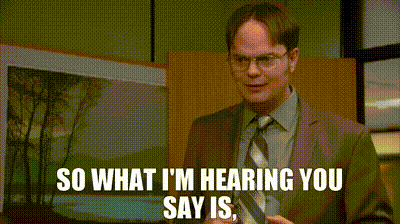Confronting Crucial Conversations
Irish playwright Bernard Shaw once remarked, "The single biggest problem in communication is the illusion that it has taken place."
We all know clear and effective communication matters; we hear about it all the time. But its impact is most acutely felt in the aftermath of crucial conversations. Let’s dive in.
A crucial conversation is a charged, political, risky, and consequential exchange that often deeply impacts relationships, promotability, and productivity. But the real damage usually lies not in the initial conflict itself, but in the lag time between the contentious moment and a genuine attempt at resolution.
Imagine a heated debate erupts during a team meeting with sales ops. Think: quota or incentive changes were set unfairly. Tempers flare, accusations fly, and the meeting abruptly ends on a sour note. While this is pretty dramatic, it actually isn't uncommon. The true cost of this hypothetical conflict isn't immediately apparent; instead, it manifests in the form of lingering tension, simmering resentment, and a gradual erosion of trust between sales ops and sellers. This "lag time" allows for misinterpretations to fester, assumptions to harden, and minor disagreements to escalate into major roadblocks. The same can easily happen with customer stakeholders. Or your partner.
Research in organizational psychology supports this notion, showing that unresolved conflicts can significantly impact employee morale, job satisfaction, and overall productivity. Gossip, passive-aggressive behavior, and a decline in team/client cohesion are common side effects. And the constant emotional drain of navigating these unspoken tensions can lead to burnout or disengagement.
It's tempting to avoid addressing these issues head-on. We may fear retaliation, further escalation, damage to relationships, or simply the discomfort of confronting difficult emotions. Don't bury your head in the sand. These issues won't magically disappear.
The ironic part of this topic is that us humans are biologically set up to poorly handle crucial conversations. Our "fight-or-flight" response, originally designed to protect us from physical danger, can also hijack our behavior during interpersonal conflicts. When faced with a challenging conversation, our brains’ reactions are largely powered by the amygdala where our primal instincts prioritize self-preservation. Productive dialogue, powered by the brain’s frontal lobe, is set aside. So instead of immediately regretting our words and berating ourselves with "What was I thinking?!," it's more helpful to ask, "What part of my brain was I thinking with?"
What can you do? While reflection is helpful, there’s no denying courage is a critical component here. Confront your fears. Ask yourself:
Am I living in the realistic worst-case scenario? We often exaggerate the likelihood of things going wrong.
Can I handle it if the worst happens? Usually, reality is less dire than our fears. You can almost always address problems as they come.
How can I minimize the risks? Thorough preparation and empathy go a long way. Practice your approach and anticipate different responses.
Am I getting emotional? Red flags to proceed with extreme caution should pop up if you sense an emotional wave coming on. Staying measured, objective, and non-combative (i.e. focusing on behavior observations not character attacks) is key.
You got this.
These crucial conversations will happen with customers, your leadership, peers, and loved ones. Work to minimize the lag time between conflict and resolution is step 1, 2, & 3 to conflict resolution. You can then find common ground and build from there.
85% of employees experience some degree of conflict at work (source). Conflict is incredibly common; dealing with it head-on isn’t. You’re less confrontational by addressing problems early to prevent further escalation because you’re preventing issues from multiplying.

